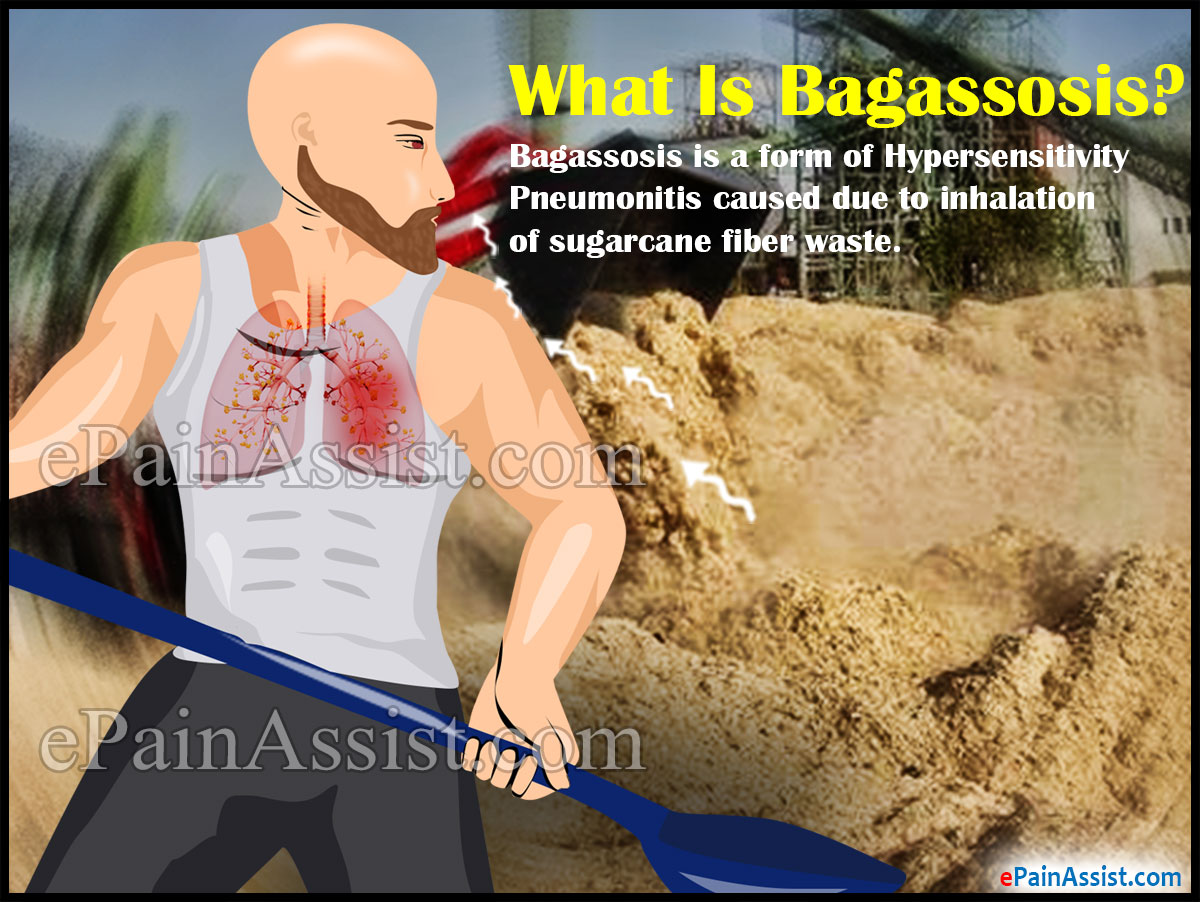Bagassosis– This is a form of Hypersensitivity Pneumonitis which is caused as a result of exposure to sugarcane fiber waste. This disease causes symptoms of shortness of breath and other respiratory difficulties.

What Is Bagassosis?
As stated, Bagassosis is a form of Hypersensitivity Pneumonitis caused due to inhalation of sugarcane fiber waste. This disease was first found in India in 1955. This disease basically causes symptoms like shortness of breath and fever.
What Are The Causes Of Bagassosis?
Bagassosis is caused by a substance called bagasse which is produced when juice is taken out from sugarcane. This substance is used for making paper. It is believed that a fungus is possibly involved in development of Bagassosis.
What Are The Symptoms Of Bagassosis?
Symptoms of Bagassosis Include:
- Shortness of breath
- Cough
- Coughing blood
- Low grade fever
- There may also be development of diffuse bronchiolitis.
How Is Bagassosis Diagnosed?
A chest x-ray is enough for a confirmatory diagnosis of Bagassosis as it will show mottling of lungs or may show a shadow.
What Are Treatments For Bagassosis?
In some investigational studies, some patients were treated with adrenal steroids with a definite positive result especially when trialed in people with severe form of this disease where as in the milder forms of Bagassosis it was a bit difficult to evaluate but trials have definitely proven adrenal steroids to be effective in treatment of Bagassosis, although further investigation needs to be done.
How Can Bagassosis Be Prevented?
Bagassosis Can Be Prevented By Following The Below Mentioned Measures:
- Dust control prevention with good ventilation in workplace.
- Use of face mask for protection.
- Periodic medical checkups of employees who are at risk for exposure.
